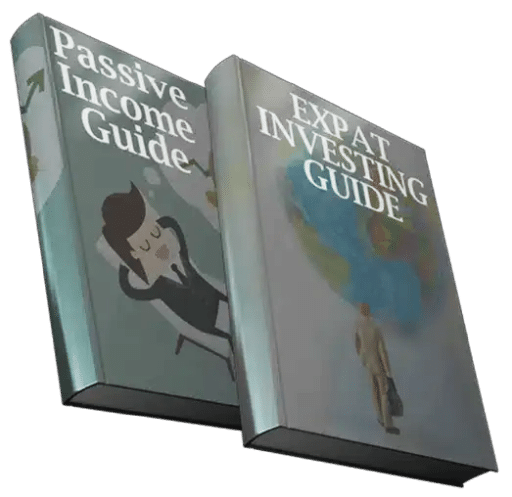When it comes to bond investing, it’s important to understand secured bonds vs unsecured bonds to make the most of your investment.
Bonds are a popular form of investment for those looking for a stable and predictable source of income. But not all bonds are created equal.
Hence, knowing their key distinctions can help you make informed investment decisions and maximize your earnings.
This blog post will delve into the world of bonds and provide a comprehensive guide on the pros and cons of unsecured bonds vs secured bonds. We will also offer valuable information on evaluating bond investments’ risk and potential returns.
If you are looking to invest as an expat or high-net-worth individual, which is what I specialize in, you can email me (advice@adamfayed.com) or WhatsApp (+44-7393-450-837).
Table of Contents
What are bonds investments?
Bonds are debt securities companies, municipalities, and governments issue to raise capital.
When an investor buys a bond, they are effectively lending money to the issuer, who promises to repay the bond’s principal amount, plus interest, at a future date.
Generally, bonds are considered relatively safe investments, as they typically pay a fixed interest rate, and the issuer is typically obligated to repay the bond’s face value upon maturity.
A value of a bond is determined by the issuer’s creditworthiness, which is reflected in the bond’s credit rating.
Bonds with higher credit ratings are considered to be less risky and typically pay lower interest rates. In comparison, bonds with lower credit ratings are considered to be riskier and pay higher interest rates.
Investing in bonds can be a good way to diversify a portfolio and reduce overall risk. It can also be a good choice for those looking for a more stable and predictable source of income than stocks.
However, bonds are not without risk. The value of a bond can fluctuate based on changes in interest rates and the issuer’s creditworthiness.
If interest rates rise, the value of existing bonds will typically fall; conversely, if interest rates fall, the value of existing bonds will typically rise.
Similarly, if the issuer’s creditworthiness deteriorates, the value of the bond may fall, and the risk of default increases.
What are the types of bonds?
There are several types of bonds, and each has its own set of characteristics, risks, and rewards that investors should consider depending on their own goals and risk tolerance.
Government Bonds
National governments issued these bonds to raise funds for various projects and programs. They are considered some of the safest investments as governments can tax their citizens to repay their debt.
Municipal Bonds
These are bonds issued by state and local governments to fund public projects such as building schools, roads, and hospitals.
Municipal bonds are generally considered less risky than corporate bonds, but they can be affected by the financial health of the issuing municipality.
Corporate Bonds
These are bonds issued by companies to raise capital for expansion or other business purposes.
Corporate bonds are considered riskier than government and municipal bonds, as the issuer’s creditworthiness can change with the company’s financial performance.
Treasury Bonds
Treasury bonds are issued by the US government and are backed by the full faith and credit of the US government. They are considered to be among the safest investments available.
Treasury Inflation-Protected Securities (TIPS)
TIPS are issued by the US government, similar to Treasury bonds. However, the interest rate on TIPS is linked to the inflation rate, which means the interest payments and the return of the principal will be adjusted for inflation.
Floating-rate Bond
These bonds have a variable interest rate that resets periodically, typically every three or six months.
Floating-rate bonds are considered less risky than fixed-rate bonds, as the interest rate will adjust to changes in the market.
Zero-coupon Bonds
These bonds only pay interest maturity. Instead, they are sold at a deep discount to their face value, and the difference between the purchase price and the face value represents the interest earned.
Secured Bonds
These are bonds backed by specific assets of the issuer, meaning the issuer has put up collateral in the event of default.
Unsecured Bonds
These are bonds that are not backed by specific assets and rely on the creditworthiness of the issuer for repayment.

What are secured bonds?
Secured bonds, also known as collateralized bonds, are bonds that are backed by specific assets of the issuer, such as real estate, equipment, or inventory.
These assets are known as collateral, and they guarantee that the issuer will repay the bond’s face value upon maturity, even if the issuer experiences financial difficulties.
When a company issues a secured bond, it pledges specific assets as collateral, which are then held in trust by a trustee. If the issuer defaults on its bond payments, the trustee has the right to seize the collateral and sell it to repay the bondholders.
This provides an added level of security to bondholders as they have a claim to specific assets in the event of default.
Examples of assets that can be used as collateral for secured bonds include real estate properties, machinery and equipment, inventory, intellectual property, and commodities.
Investing in secured bonds can offer some advantages over other types of bonds. The collateral backing the bond provides bondholders with a greater level of security than unsecured bonds, which rely solely on the creditworthiness of the issuer.
Additionally, secured bonds typically pay a higher interest rate than other bonds, as the issuer must compensate bondholders for the added risk.
However, investing in secured bonds also has its disadvantages. The value of the collateral can be affected by market conditions and can fluctuate, which can impact the bondholder’s return.
If the issuer defaults, the bondholder’s claim to the collateral becomes subordinate to other creditors, which means they may not receive the full value of the collateral.
It’s also worth noting that secured bonds can be more complex to evaluate than other bonds, as the bondholder must consider not only the issuer’s creditworthiness but also the collateral’s value and liquidity.
What are unsecured bonds?
Unsecured bonds, also known as debentures, are bonds that are not backed by specific assets of the issuer. Instead, they rely on the creditworthiness of the issuer for repayment.
Unsecured bondholders do not have a claim to specific assets in the event of default, unlike secured bondholders.
When a company issues an unsecured bond, it promises to repay the bond’s face value upon maturity, along with interest payments.
The issuer’s ability to repay the bond is based on its overall financial strength, which is reflected in its credit rating.
Unsecured bonds with a high credit rating are considered to be less risky and typically pay lower interest rates, while bonds with lower credit ratings are considered to be riskier and pay higher interest rates.
Cash or cash equivalents, future cash flows, the company’s reputation or goodwill, and the parent company’s assets or creditworthiness are assets that can be used as collateral for unsecured bonds.
Investing in unsecured bonds can be more straightforward than investing in other bonds, as the bondholder only needs to consider the creditworthiness of the issuer.
When you invest in an unsecured bond, holders do not have to worry about the value of the collateral fluctuating or the collateral being seized by other creditors in the event of default.
They also typically have lower costs of issuance, which can translate into higher returns for bondholders.
But since returns on unsecured bonds are solely dependent on the creditworthiness of the issuer, the value of the bond may fall, and the risk of default increases if the issuer’s creditworthiness deteriorates,
They also typically pay a lower interest rate than secured bonds, as the issuer does not have to compensate bondholders for the added risk.

What are the key differences between secured bonds vs unsecured bonds?
The key difference between secured and unsecured bonds is the collateral requirement. Secured bonds are backed by specific assets of the issuer, such as real estate, machinery, or inventory, while unsecured bonds are not.
They also differ in credit risk. This is the risk that the issuer will default on its bond payments.
Secured bonds have lower credit risk than unsecured bonds, as the bondholders have a claim to specific assets in the event of default. However, the value of the collateral can be affected by market conditions, which can impact the bondholder’s return.
Secured bonds also typically pay a higher interest rate than unsecured bonds, as the issuer must compensate bondholders for the added risk. On the other hand, unsecured bonds typically pay a lower interest rate as the issuer’s creditworthiness is the only factor determining the bond’s value.
In terms of redemption terms, secured bonds typically have more restrictive redemption terms than unsecured bonds. The bondholder’s claim to the collateral is subordinate to other creditors, which means they may not receive the full value of the collateral.
The tax implications of investing in secured and unsecured bonds can also be different. Secured bonds may be subject to property taxes on the collateral, while unsecured bonds may be subject to different tax rates.
Market conditions can also affect the value of both secured and unsecured bonds. Interest rates and the creditworthiness of the issuer are two key factors that can impact the value of a bond.
Finally, secured bonds may be less liquid than unsecured bonds, as the value of the collateral can be affected by market conditions. This can make it harder to sell a secured bond on the open market.
How to choose between investing in secured bonds vs unsecured bonds?
Choosing between investing in secured bonds vs unsecured bonds depends on an individual’s financial goals, risk tolerance, and investment horizon.
Creditworthiness of the issuer
The creditworthiness of the issuer is an important factor when choosing between secured and unsecured bonds.
Secured bonds have lower credit risk than unsecured bonds, as the bondholders have a claim to specific assets in the event of default. However, the value of the collateral can be affected by market conditions, which can impact the bondholder’s return.
Interest rate
Secured bonds typically pay a higher interest rate than unsecured bonds, as the issuer must compensate bondholders for the added risk. Secured bonds may be a good choice if you are looking for a higher income.
Risk tolerance
An individual’s risk tolerance is important when choosing between secured and unsecured bonds.
Secured bonds are considered to be less risky than unsecured bonds, but the value of the collateral can fluctuate, which can impact the bondholder’s return.
On the other hand, unsecured bonds rely solely on the issuer’s creditworthiness and are considered riskier, but they may offer more predictable returns.
Redemption terms
Secured bonds typically have more restrictive redemption terms than unsecured bonds. The bondholder’s claim to the collateral is subordinate to other creditors, which means they may not receive the full value of the collateral. If liquidity is important, unsecured bonds may be a better choice.
Tax implications
The tax implications of investing in secured and unsecured bonds are also different. Secured bonds may be subject to property taxes on the collateral, while unsecured bonds may be subject to different tax rates. It’s important to consider the tax implications of your investment before making a decision.
Market conditions
Market conditions can affect the value of both secured and unsecured bonds. Hence, it is important to consider the current market conditions and how they may impact your investment.

How to maximize earnings with secured and unsecured bonds?
Both secured and unsecured bonds are great forms of investment. They both can maximize earnings if you understand their nature, the opportunities they present, and the risk involved.
To maximize earnings, diversifying investments is important. Instead of investing all of your money in one type of bond or one issuer, spread your investments across a variety of bonds and issuers. This can reduce the impact of any potential losses from any one bond or issuer.
Conducting thorough research is also crucial to maximizing earnings from bonds. This includes researching the issuer, the bond’s credit rating, the collateral, the maturity date, the yield, and the coupon rate. It’s also important to research the callability feature, which is the issuer’s ability to redeem the bond before its maturity date.
Staying informed about market conditions is essential to maximizing earnings from bonds. This includes monitoring interest rates, credit ratings, and other factors that can impact the value of your bond investments.
Working with a financial advisor can also be beneficial to maximizing earnings from bonds. A financial advisor can provide valuable guidance on bond investments and help you to identify the best opportunities to maximize your earnings.
Analyzing the credit ratings of the issuer is another important step in maximizing earnings from bonds. Credit ratings indicate the issuer’s creditworthiness and can help identify potential risks associated with a bond investment.
Consider the maturity date is also important. Long-term bonds may offer higher yields but carry more interest rate risk than short-term bonds.
Meanwhile, evaluating the yield and coupon rate is also a factor to consider. A higher yield and coupon rate can provide a higher return on investment, but it also comes with a higher level of risk.
Remember to assess the callability feature of the bond. The issuer can redeem a callable bond before the maturity date, which can affect the bondholder’s return.
Exploring secondary market opportunities. This includes buying bonds on the secondary market, which can offer attractive returns if the bond is undervalued.
Finally, understand the role of the trustee and the indenture. The trustee holds the collateral in trust and is responsible for administering the bond indenture, which is the legal document that outlines the rights and responsibilities of the bondholders and the issuer.
Knowing the trustee’s role can help bondholders evaluate the bond’s security and the issuer’s ability to meet its obligations.
Conclusion
In conclusion, investing in both secured and unsecured bonds can be a great way to diversify your portfolio and maximize your returns.
Secured bonds offer a higher level of security as they are backed by specific assets of the issuer, while unsecured bonds rely solely on the creditworthiness of the issuer.
However, it is important to note that each type of bond has its own characteristics, risks, and rewards, and it’s crucial to consider your own goals and risk tolerance before investing in any bond.
Maximizing returns with both secured and unsecured bonds requires a combination of diversifying investments, conducting thorough research, staying informed about market conditions, working with a financial advisor, analyzing credit ratings of the issuer, considering the maturity date, evaluating the yield and coupon rate, assessing the callability feature, exploring secondary market opportunities, and understanding the role of the trustee and the indenture.
It’s important to note that investing in bonds is not a one-size-fits-all solution, and it’s crucial to consult a financial advisor before making any investment decisions.
The key is to have a well-diversified portfolio that aligns with your financial goals, risk tolerance, and investment horizon.
By following these steps, investors can make informed decisions and maximize their returns when investing in both secured and unsecured bonds.
Pained by financial indecision? Want to invest with Adam?

Adam is an internationally recognised author on financial matters, with over 760.2 million answer views on Quora.com, a widely sold book on Amazon, and a contributor on Forbes.



